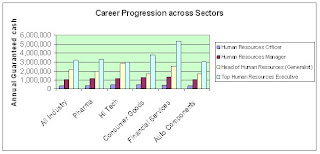As per John Kotter- Leaders don't make plans; they don't solve problems; they don't even organize people. What leaders really do is prepare organizations for change and help them cope as they struggle through it
Leadership isn't mystical and mysterious. It has nothing to do with having "charisma" or other exotic personality traits. It is not the province of a chosen few. Nor is leadership necessarily better than management or a replacement for it. Rather, leadership and management are two distinctive and complementary systems of action. Each has its own function and characteristic activities. Both are necessary for success in an increasingly complex and volatile business environment.
Most corporations today are over managed or under led. They need to develop their capacity to exercise leadership. Successful corporations don’t wait for leaders to come along. They actively seek out people with leadership potential and expose them to career experiences designed to develop that
With careful selection, nurturing, and encouragement, dozens of people can play important leadership roles in a business organization. But while improving leadership ability to lead, companies should remember that strong leadership with weak management is no better, and is sometimes actually worse, than the reverse. The real challenge is to combine strong leadership and strong management and use each to balance the other.
Of course, not everyone can be good at both leading and managing. Some people have the capacity to become excellent managers but not strong leaders. Others have great leadership potential but, for a variety of reasons, have great difficulty becoming strong managers. Smart companies value both kinds of people and work hard to make them a part of the team.
But when it comes to preparing people for executive jobs, such companies rightly ignore the recent literature that says people cannot manage and lead. They try to develop leader-managers. Once companies understand the difference between leadership and management, they can begin to groom their top people to provide both The Difference between Management and Leadership Management is about coping with complexity. Its practices and procedures are largely a response to one of the most significant developments of the twentieth century: the emergence of large organizations. Without good management, complex enterprises tend to become chaotic in ways that threaten their very existence. Management is about coping with Complexity. Leadership, by contrast, is about coping with change.
These two different functions–coping with complexity and coping with change, shape the characteristic activities of management and leadership. Each system of action involves deciding what needs to be done, creating networks of people and relationships that can accomplish an agenda, and then trying to ensure that those people actually do the job. But each accomplishes these three tasks in different ways.
Companies manage complexity first by planning and budgeting-settmg targets or goals for the future (typically for the next month or year), establishing detailed steps for achieving those targets, and then allocating resources to accomplish those plans. By contrast, leading an organization to constructive change begins by setting a direction, developing a vision of the future (often the distant future) along with strategies for producing the changes needed to achieve that vision. Management develops the capacity to achieve its plan by organizing and-creating an organizational structure and set of jobs for accomplishing plan requirements, staffing the jobs with qualified individuals, communicating the plan to those people, delegating responsibility for carrying out the plan, and devising systems to monitor implementation. The equivalent leadership activity, however, is aligning people. This means communicating the new direction to those who can create coalitions that understand the vision and are committed to its achievement. Finally, management ensures plan accomplishment by controlling and problem solving, monitoring results versus the plan in some detail, both formally and informally, by means of reports, meetings, and other tools; identifying deviations; and then planning and organizing to solve the problems. But for leadership, achieving a vision requires motivating and inspiring-keeping people moving in the right direction, despite major obstacles to change, by appealing to basic but often untapped human needs, values, and emotions.
A closer examination of each of these activities will help clarify the skills leaders need.





 On the other end of the spectrum is the Auto Component industry, where the compensation for HR professionals across levels seems to be below any other sector in consideration. The other sectors where the compensation figures for HR professionals seem to suggest a premium is the Consumer Goods (FMCG) sector and the Information Technology sector. However, unlike the financial services sector, where this premium is commanded across levels, it is observed that the top management compensation in IT and the Senior Manager level in FMCG lag the market while all other levels seem to be above the market.
On the other end of the spectrum is the Auto Component industry, where the compensation for HR professionals across levels seems to be below any other sector in consideration. The other sectors where the compensation figures for HR professionals seem to suggest a premium is the Consumer Goods (FMCG) sector and the Information Technology sector. However, unlike the financial services sector, where this premium is commanded across levels, it is observed that the top management compensation in IT and the Senior Manager level in FMCG lag the market while all other levels seem to be above the market. The increase noted when there is a progression from Management to Senior Management in HR is less dramatic. This is true for all sectors, without exception. However, it is seen that some sectors downplay this progression, notably the Consumer Goods industry (30%) while some other sectors have more telling hikes in compensation (Financial Services and Pharmaceutical sectors giving 89% and 75% resp).
The increase noted when there is a progression from Management to Senior Management in HR is less dramatic. This is true for all sectors, without exception. However, it is seen that some sectors downplay this progression, notably the Consumer Goods industry (30%) while some other sectors have more telling hikes in compensation (Financial Services and Pharmaceutical sectors giving 89% and 75% resp).







